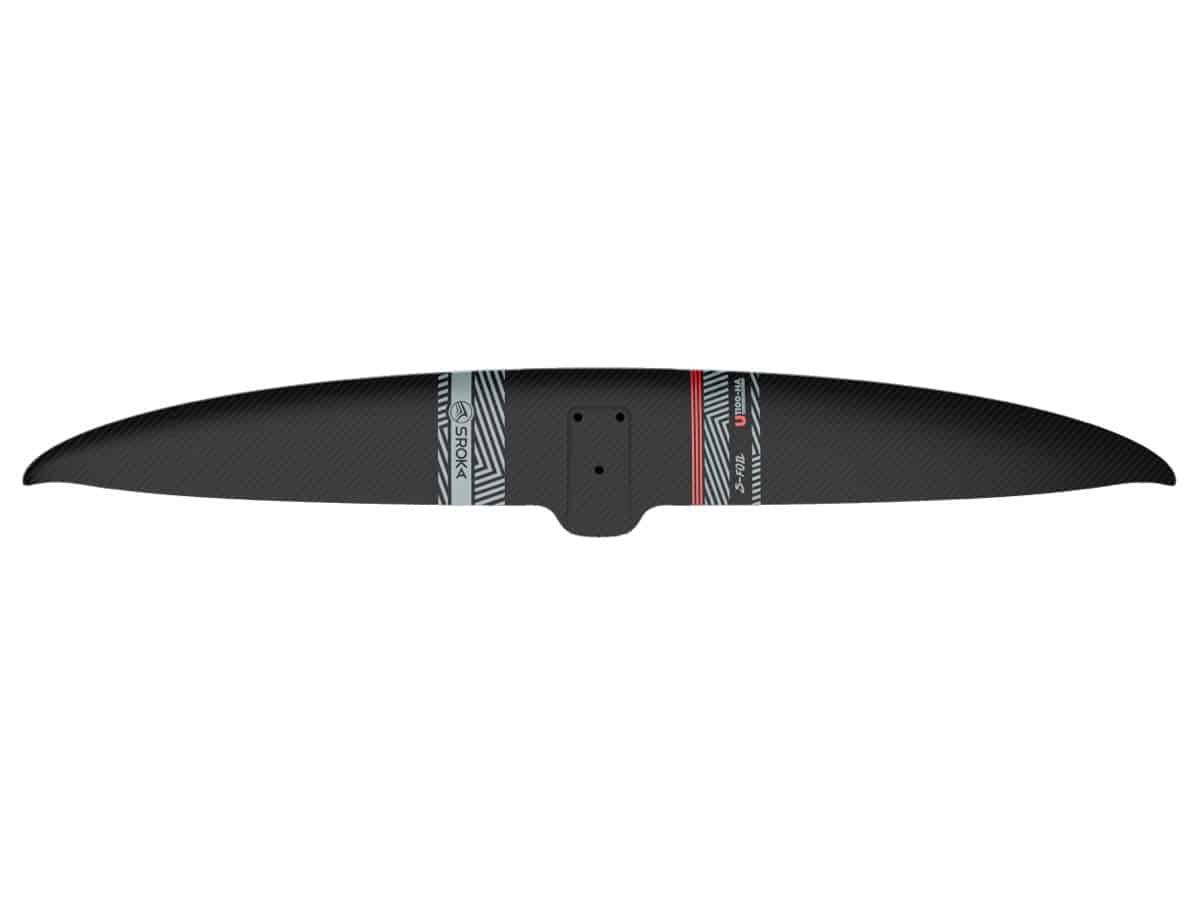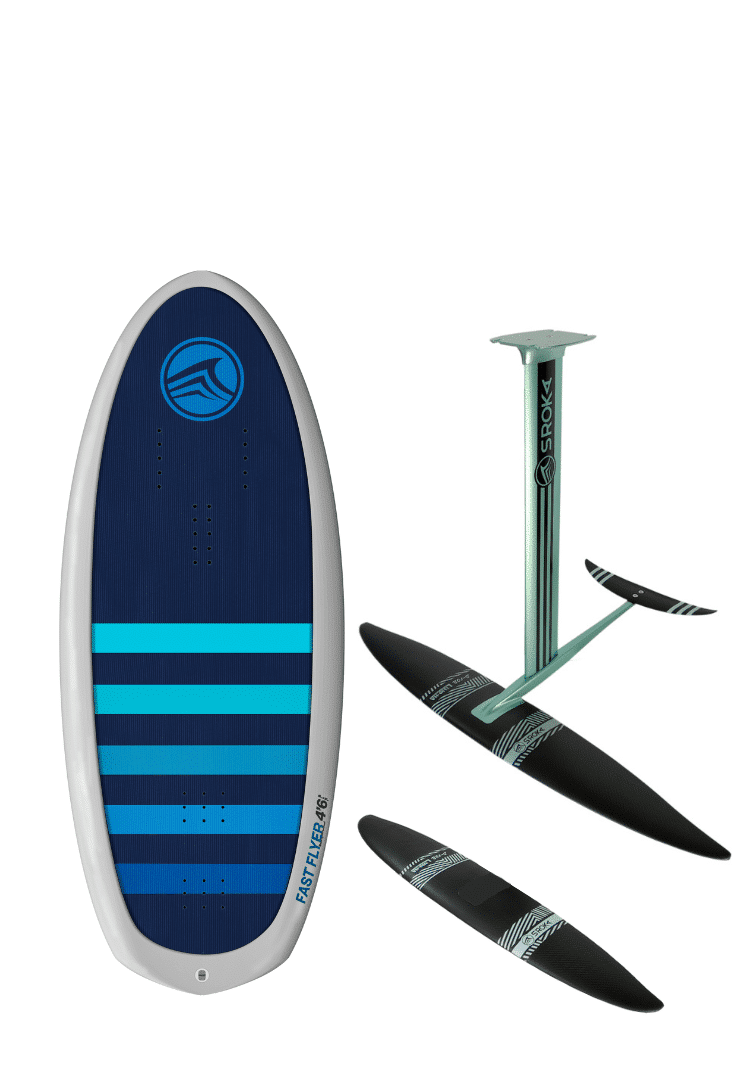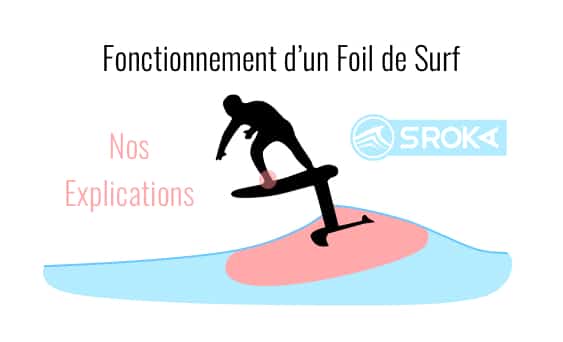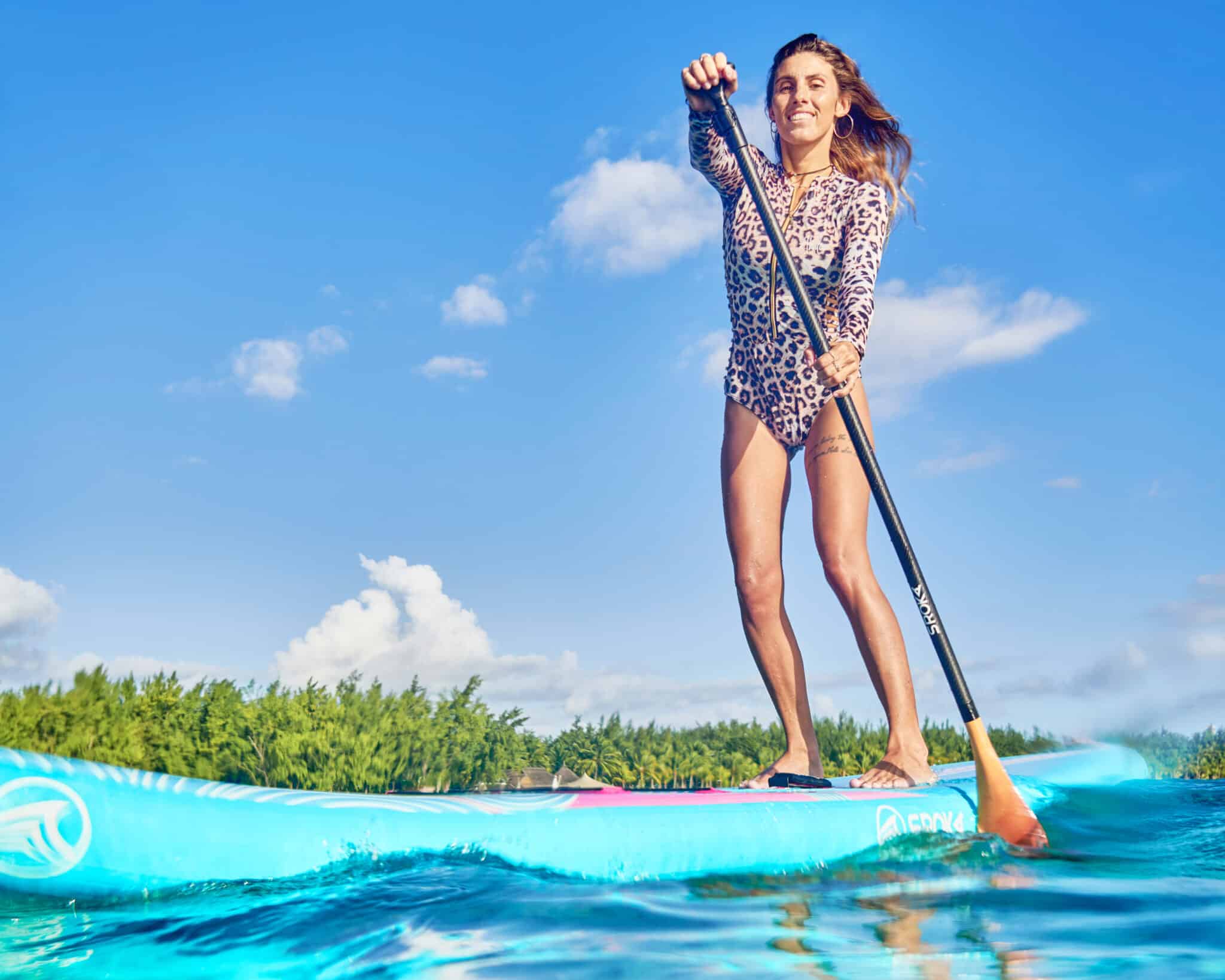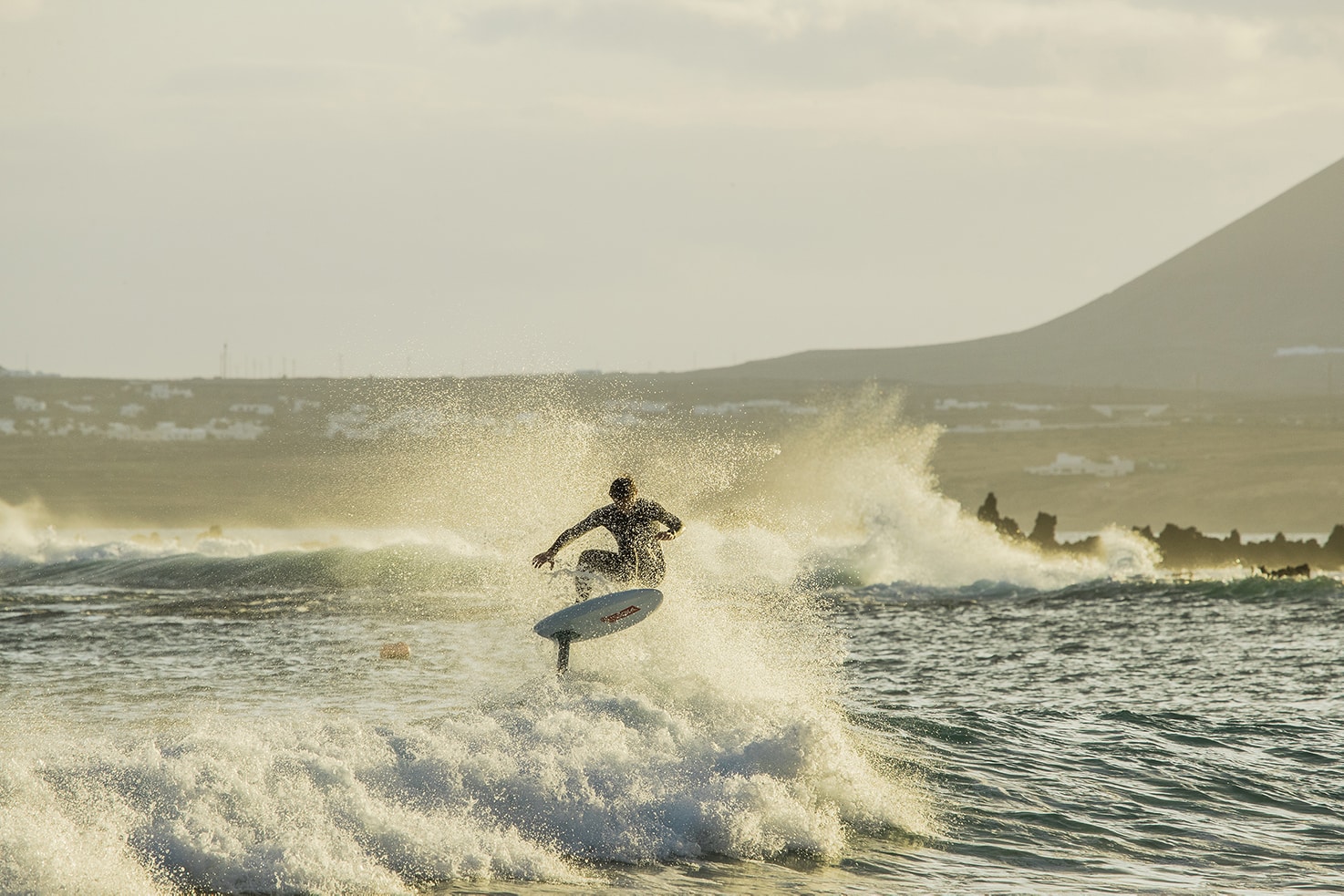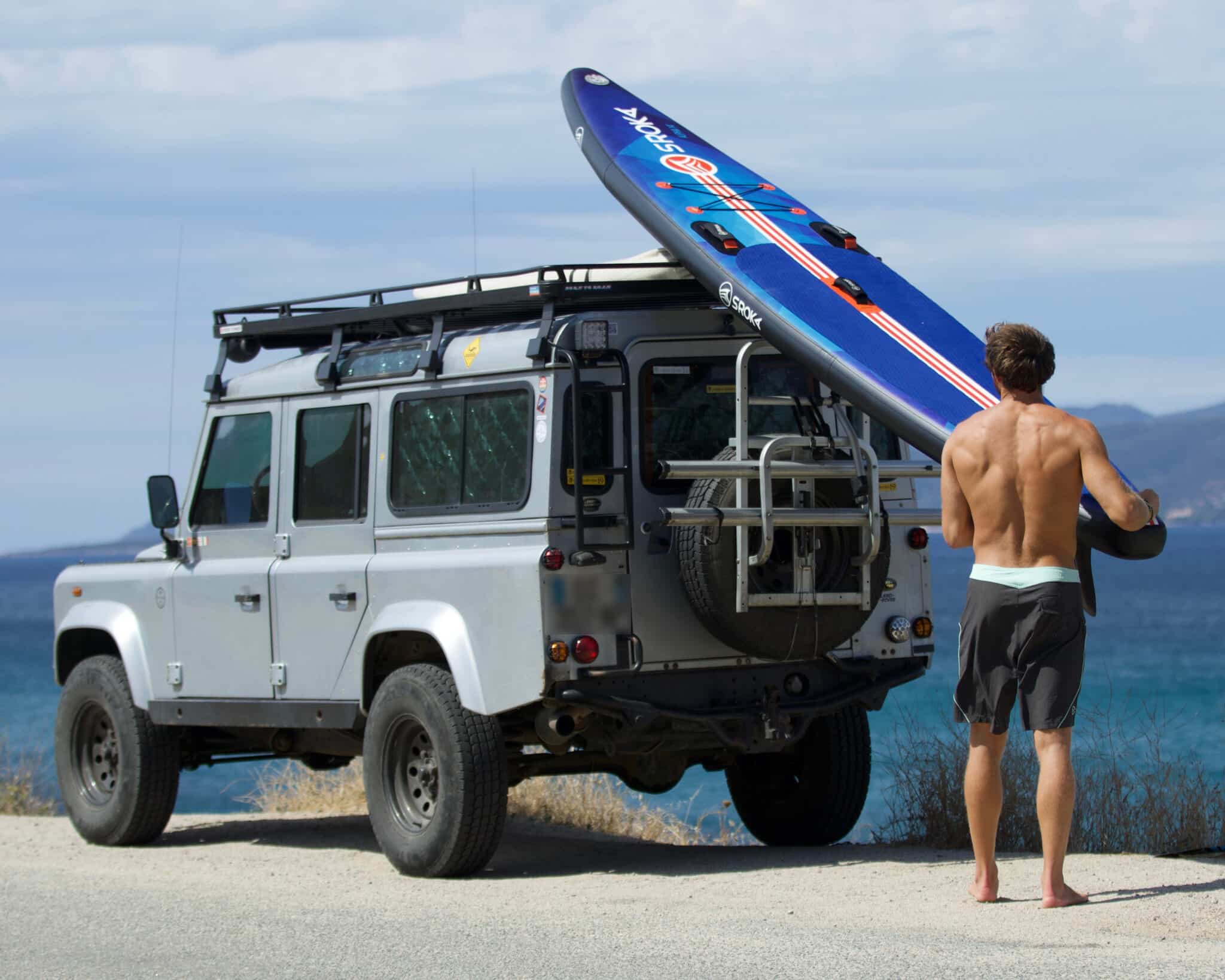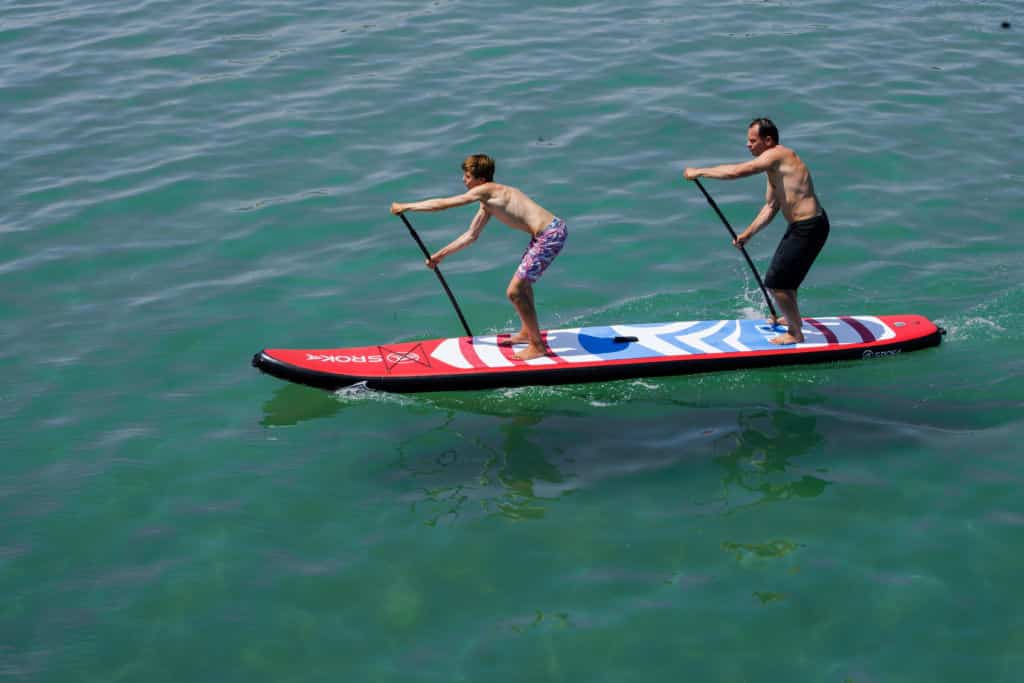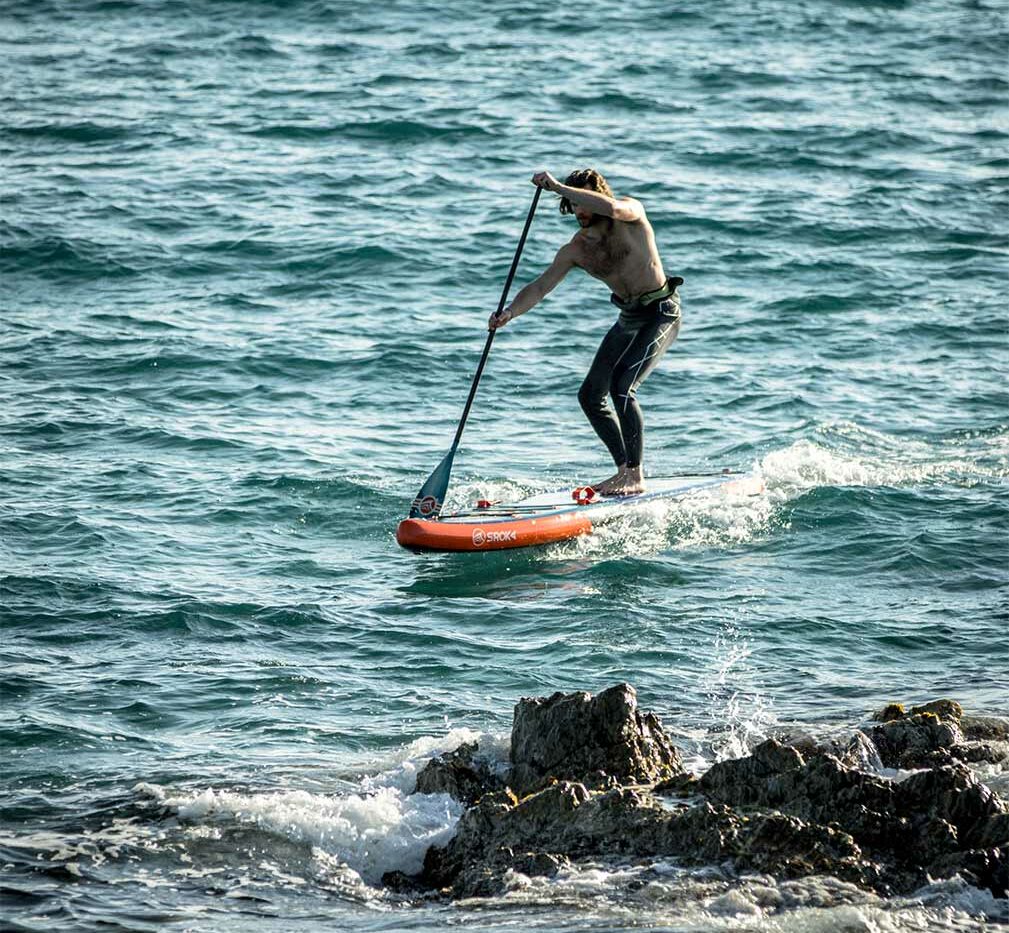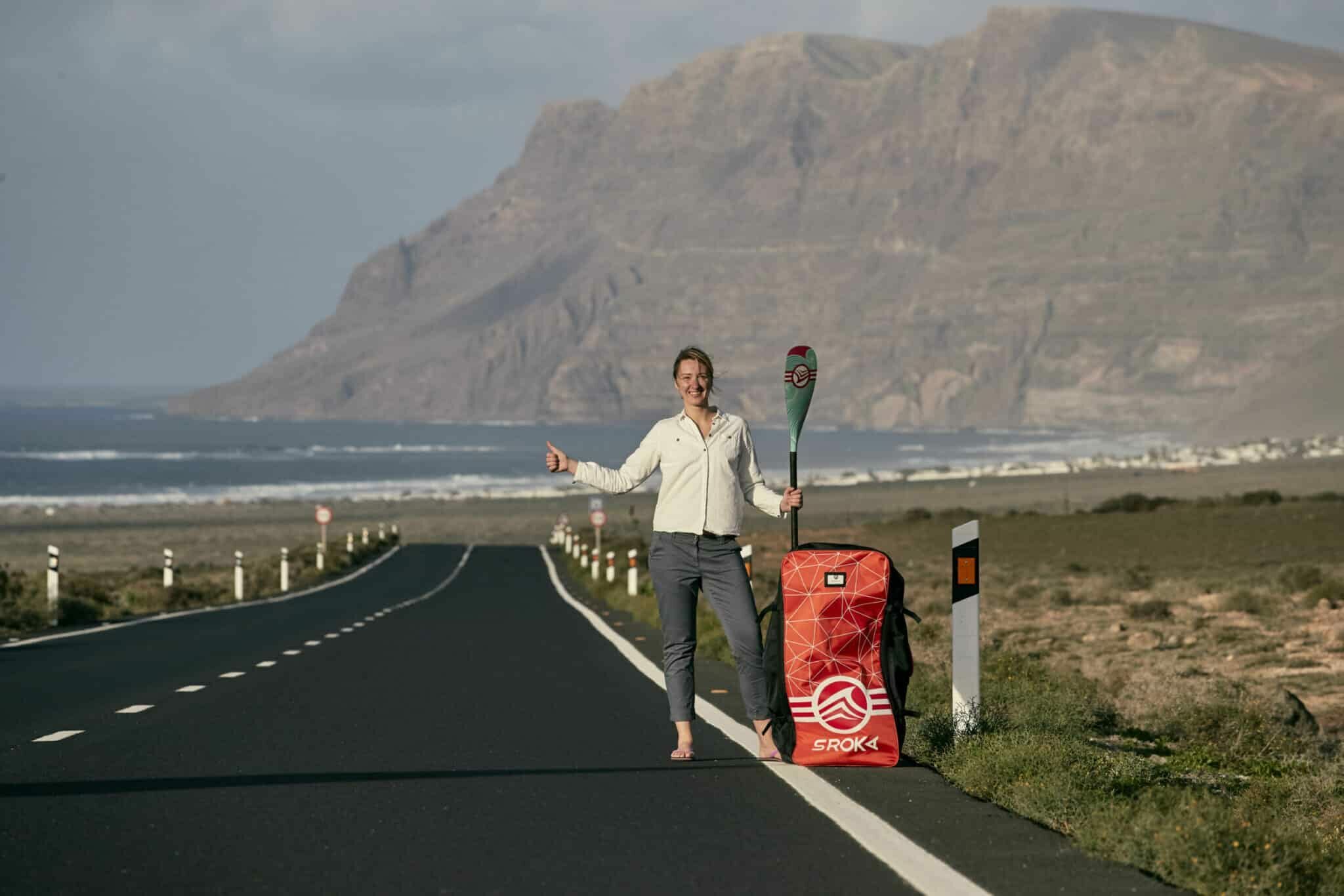 LE MAGAZINE
LE MAGAZINEHow to surf Foil

How to surf Foil
Surf-Foil emerged in the 2000s. Among the pioneers were such great names as Laird Hamilton, Dave Kalama and Paolo Rista. Originally, it was just a way of flying over the water in a surf-tow, in large swell waves. In 2016, it was Kai Lenny who made the number of practitioners explode. The discipline immediately conquered Hawaiian, Australian, Californian and Brazilian surfers. Surfing levels soared. Gradually, foil arrived in Europe and France. The advantages of Foil are that it multiplies the number of possible sessions and spots, and offers new sensations. In this article, we’ll explain how a foil works, with its various parts, and we’ll detail the importance of the front wing’s characteristics.
This article explains how a Foil works for the following sports: Surf Foil, SUP FoilDownwind SUP Foil and Tow-in Foil (towed waves).
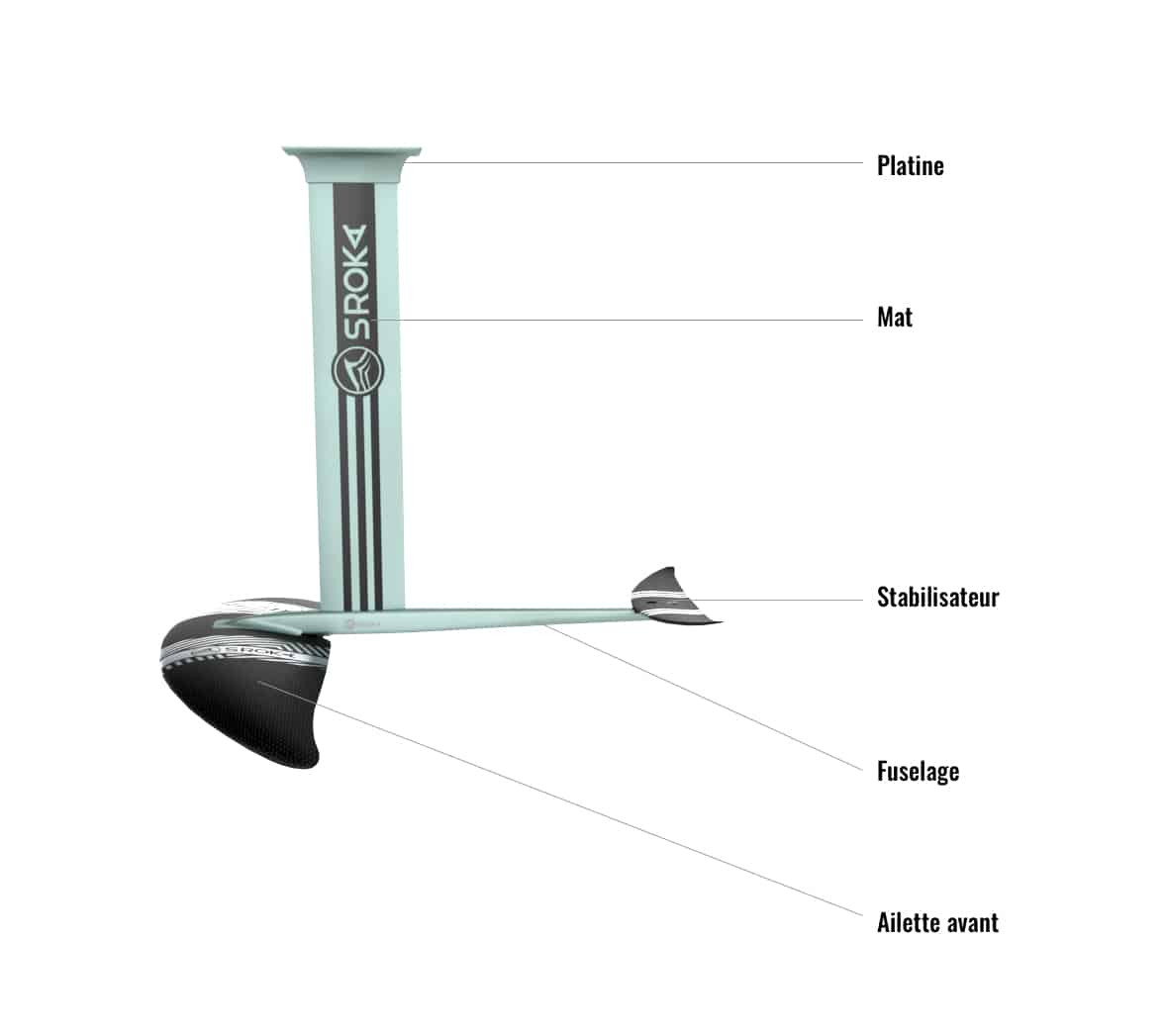
Composition of a Foil Surfboard
The Foil consists of the following components: mast, fuselage, front wing and rear wing (stabilizer).
The mast is attached perpendicular to the board and fuselage. In this way, the wings are parallel to the board. In this way, the foil can be operated by simply pressing down on it with your feet.
The front winglet has a domed upper section (upper surface) and a flatter lower section (lower surface). The front wing has a rounded leading edge that rapidly increases in thickness, then tapers to a thinner trailing edge. The width of the front wing (from the center of the leading edge to the center of the trailing edge) is called “chord”, and its length (the right/left extremity) is called “span”.
Finally, the horizontal stabilizer has a similar shape to the front wing, with equivalent properties. However, it has a reduced surface area and a different profile.
Operating principles of a Foil
The operating principle of a foil surfboard is based on fluid dynamics. The front wing is pulled upwards as it moves forward, as water molecules passing over the top surface of the front wing accelerate to catch up with water molecules passing over the bottom surface (which is shorter because it’s flat). The acceleration of the molecules on the upper part of the wing creates negative pressure, while the slowing of those on the lower part creates positive pressure. The result is an upward suction effect. The higher the speed of the Foil, the more the foil is “pulled” upwards (with equal profile and angle).
We can easily compare the operation of a Foil to that of an airplane, which takes up much the same shape if we forget the mast and the board. The speed at which it moves creates lift, enabling it to take off. The difference in angle given to an aircraft’s wings enables it to stabilize in the air. Decreasing displacement speed decreases lift, enabling a plane to land (at a constant angle of incidence). Finally, to change the angle of incidence of the foil, the rider can alternately press the front or rear foot to raise or lower the foil or the stability. It’s all a question of adjusting the pressure on the supports.
To take off, speed must be sufficiently high to create lift on the front wing. Combined with a high angle of incidence (thanks to pressure on the back foot), the board takes off. to stabilize, pressure on the front leg reduces the angle of incidence, thus reducing lift and accelerating.
Our best SURF FOIL gear
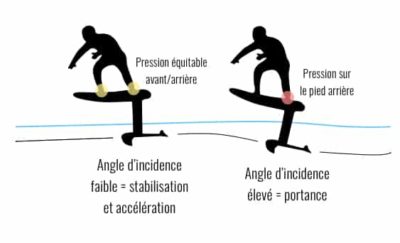
Wave power as a source of energy
While the airplane uses the suction force of air molecules, the foil uses the suction force of water molecules, which have a much higher density than air. This density will further increase the lift (upward suction effect) of foil as speed increases.
In this article, we’re talking about Surf Foil, i.e. the use of water movements (waves, swells, troughs, boat wakes) to fly. In contrast to wind, which in kite or windfoil allows the use of a constant force external to the water, the water movements of waves are variable forces with lift zones precisely localized on the water surface.
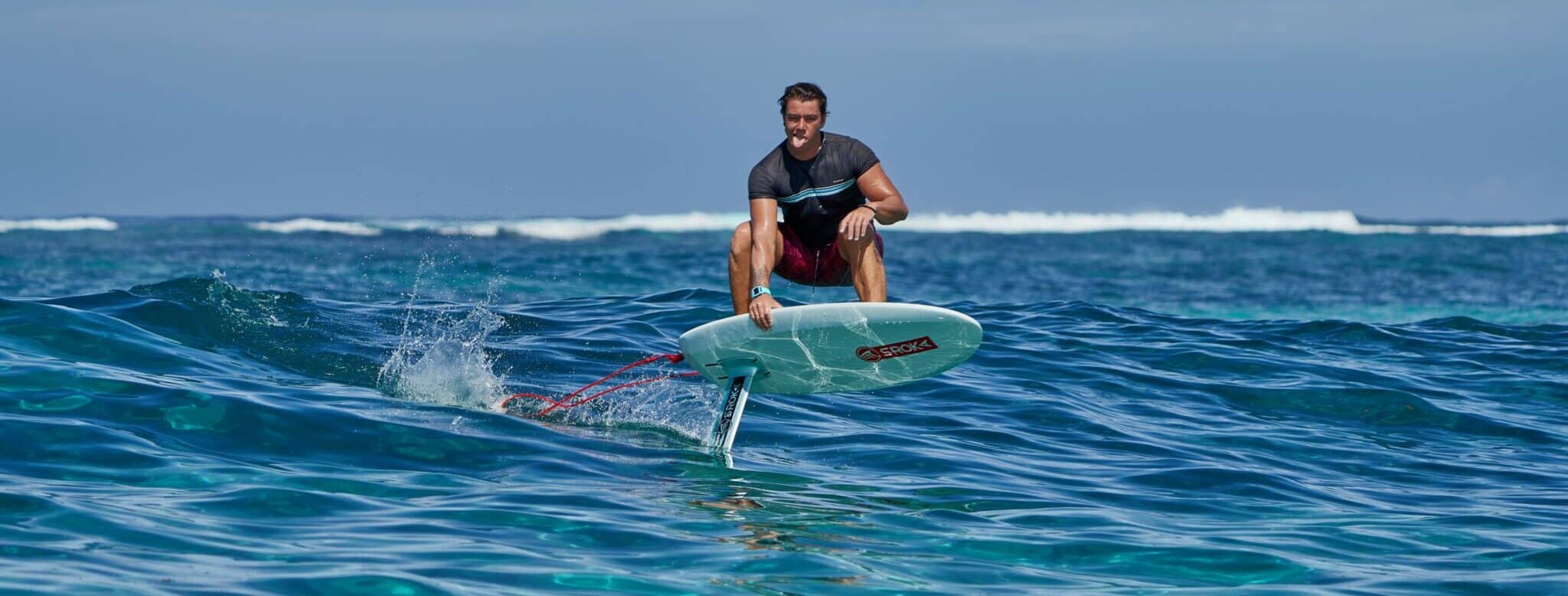
HOW FOIL CHARACTERISTICS VARY
When it comes to fluid dynamics, even the smallest detail or change to the Foil has an impact on its characteristics. We have focused on 4 major characteristics of a Surf Foil to explain which parameters influence them (there are many more, but we won’t go into them in this article).
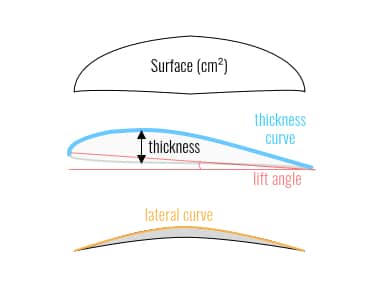
Lift
The lift of Foil, or the upward suction effect, varies mainly according to the size of the front wing, its thickness, profile shape and angle of incidence. The greater the surface area and thickness of a wing, the more lift it generates. The higher the angle of incidence, the more lift it generates, but the more it slows down foil. Conversely, the lower these parameters are, the more lift is reduced. With the same surfaces, angles and thicknesses, two different profiles will generate different lift and speeds. The surface area as the only reference parameter is not sufficient to determine whether a foil has high or low lift.
The specific characteristics of the front wing profile will influence the overall lift of Foil. These include the upper surface curve and the lateral curve, i.e. the curve running lengthwise from one side to the other.
Lastly, other external factors influence the overall lift of Foil, such as the weight of the rider, the weight and size of the board and, of course, the power of the waves.
Speed
Alongside the lift of the Foil, the speed of the wing depends on the surface area and angle of incidence of the front wing. A front wing with a small surface and/or little thickness will offer more speed, and a front wing with less angle of incidence will also be faster.
Secondly, the specific shape of the wing for the same surface area affects the speed of Foil. A wing with less chord and therefore more span will be faster. In addition, the wing’s profile (parameters mentioned above) has a major influence on speed and ability to accelerate.
Finally, as mentioned above, the weight of the rider, the size and weight of the board and the power and speed of the swell are external factors that strongly influence the speed of Foil.
Stability
A relatively slow Foil with a lot of lift (i.e. large surface area, wing thickness and a small angle of incidence) will be more stable than a faster, less downwind foil.
The main elements enabling the Foil to gain stability are the length (the chord) of the front wing, its thickness and the surface area and span of the rear wing, also known as the stabilizer.
The rear wing (stabilizer) plays a key role in stabilizing the Foil. Its lift is the opposite of that of the front wing, thus countering the lift of the front wing by creating opposing forces to stabilize the whole foil.
The external factors influencing the stability of Foil are of course the rider’s weight and technical ability, but also the type of water on which Foil surfing is practiced. An agitated body of water with current, backwash and breakers will be more unstable, as these elements disrupt the depressions and overpressures that generate the upward pull of the Foil (like an air disturbance when flying).
Handling & glide
While a Foil with little lift (i.e. little surface area, angle of incidence and thickness) is faster and indirectly more maneuverable, this is not the only parameter affecting its handling.
The most important aspect of handling is the shape of the front wing, in particular the side curve, which is accentuated to make it easier to turn with the Foil. A high side curve will make the foil more manoeuvrable, but slower, because for the same surface area of lift (shadow cast on the ground) the total surface area will be greater and will brake. Conversely, a flatter side curve will turn less, but faster.
The wingspan also influences handling. The bigger the wingspan, the longer the foil will glide, but the tighter the curves. It’s a bit like a longboard and a shortboard.
IN SUMMARY
The general shape and dimensions of Foil vary these four characteristics:
- The bigger and thicker the wing, and the greater the angle of incidence, the greater the lift and the lower the speed.
- The smaller the wing, the less thickness, angle and chord relative to its wingspan = the faster it is.
- The wider the wing span, the longer it will glide and the more efficient it will be at pumping.
- The bigger and thicker the wing and the longer the chord, the more stable it is.
- The smaller, thinner and more curved a wing is, the more manoeuvrable it is.
- The wider the wing span, the less manoeuvrable it will be.
OUR S-FOIL DEVELOPMENT CHOICES
When we developed our S-Foil, we spent months of R&D and testing to find the best compromise betweenaccessibility, versatility and performance.
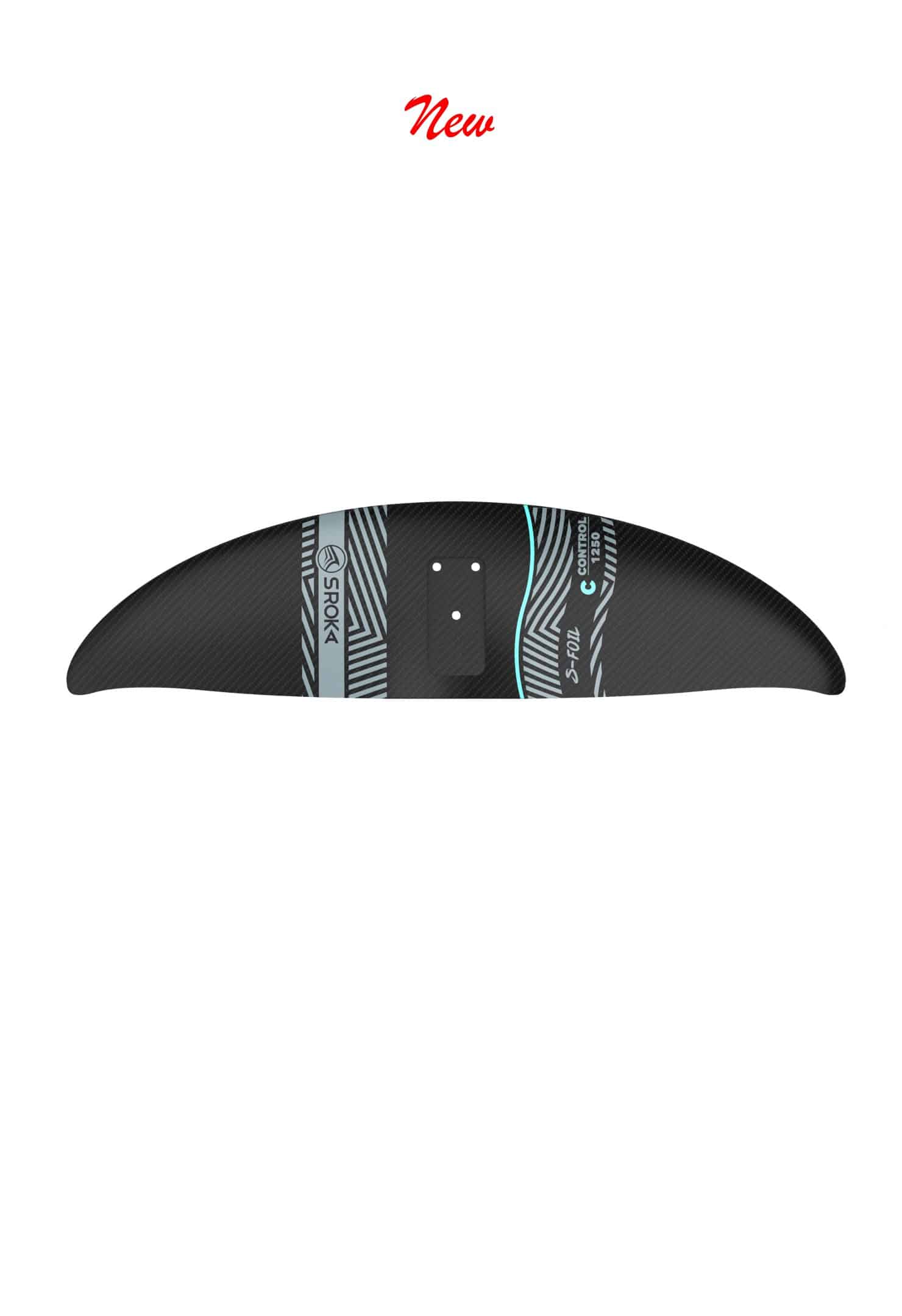
Accessibility
Our vision is to democratize board sports by offering easy-to-learn and easy-to-improve products at affordable prices with excellent overall performance. We’ve worked particularly hard on our S-Foil control, with an easy, error-tolerant and stable wing profile to make it as easy as possible for everyone to learn.
To achieve this, we’ve increased the surface area, chord, span and thickness of the front wing compared to our previous models, to increase lift and stability. We’ve also reworked the stabilizer, adding surface area, lateral curve and a better thickness curve on the surface to maximize glide.
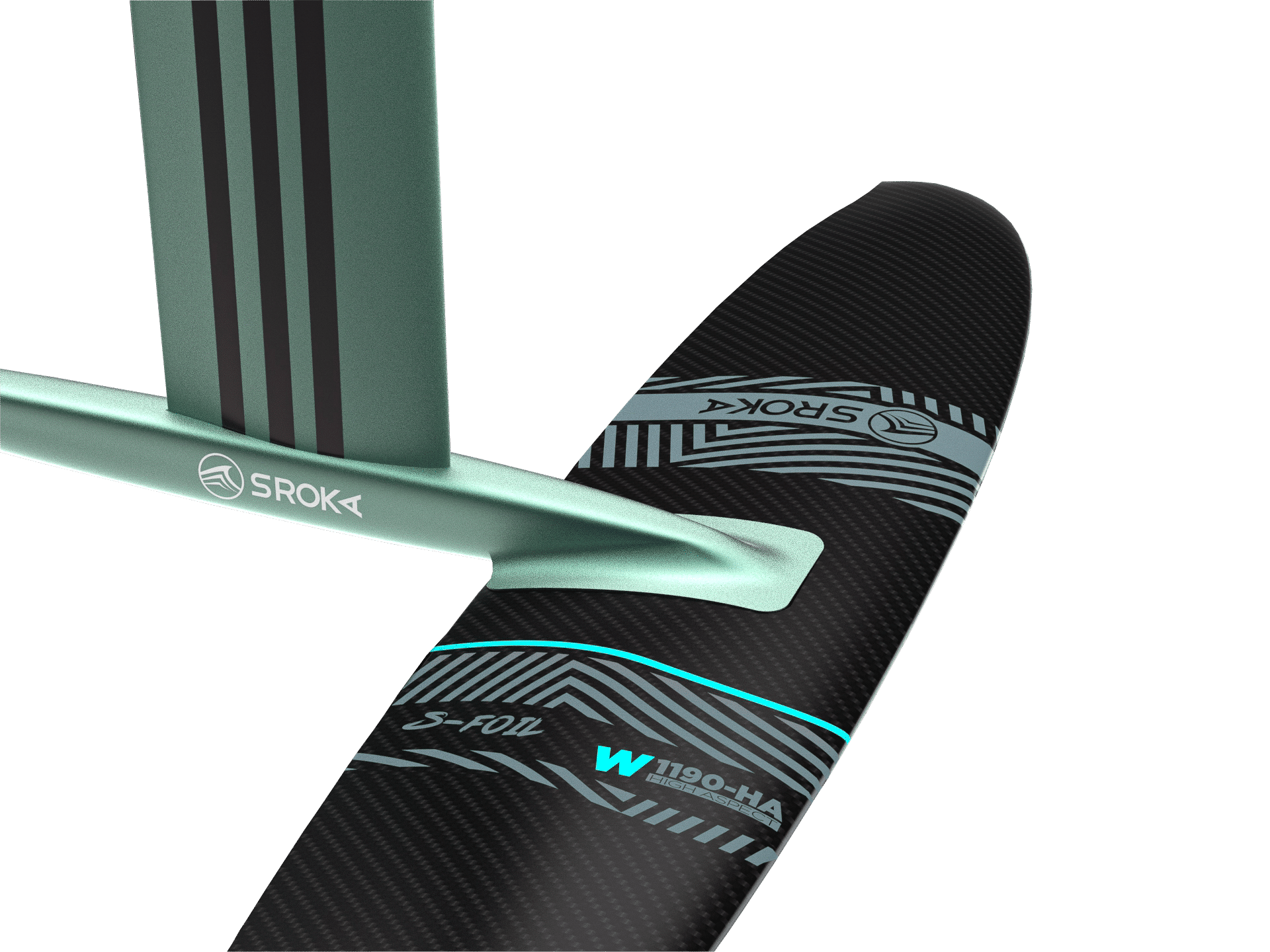
Versatility
With so much equipment available these days, versatility was a natural choice. Versatility in terms of type of practice (Wake, Wing, Surf, Kite, etc.) but also in terms of conditions (wide wind ranges and all types of waves).
In this context, we recommend the HA range, and in particular the 1190 L or W, which will enable you to sail a wing foil, but also be at ease on the foil surfboard, and have perfect tolerance for both sports.
Performance
If the choice of accessibility and versatility doesn’t always go hand in hand with performance, we’ve worked on the profile and shape of our wings to find a compromise between easy pumping, long gliding and maneuverability.
By adapting fuselage length and stabilizer size, we can make a foil much more maneuverable, and thus achieve a compromise between glide, pumping ease and foil maneuverability. This is what we’ve done with the UHA range, and combined with shorter fuselages, we get an almost perfect compromise.
THE BOARD’S INFLUENCE ON FOIL BEHAVIOR
Length
Board length will influence your surfing in two ways Foil. A longer board with more volume makes it easier to catch waves and take off. However, a long board reduces the lift of foil once in the air compared to a short board, due to the extra weight at the front.
If the choice of accessibility and versatility doesn’t always go hand in hand with performance, we’ve worked on the profile and shape of our wings to find a compromise between easy pumping, long gliding and maneuverability.
By adapting fuselage length and stabilizer size, we can make a foil much more maneuverable, and thus achieve a compromise between glide, pumping ease and foil maneuverability. This is what we’ve done with the UHA range, and combined with shorter fuselages, we get an almost perfect compromise.
Width
The board’s width, like its length, can make it easier to paddle into waves for take-off. Once in the air, however, the rails of a board that’s too wide are likely to touch the surface of the water during turns, slowing the rider down.
Weight and volume
Board weight has a negative influence on board lift. The heavier the board, the more the lift of foil will be counteracted (opposing force). On the other hand, more volume means better lift off the waves.
Shape
It’s easy to imagine that the board’s shape doesn’t matter much in the air, but there are several details that enhance the flying experience: the rocker at the front and the bevel at the back and sides to keep the board out of the water. Other parameters, such as the rounded shape of the nose and the concave on the deck and under the hull, make for more comfortable rowing and more efficient wave catching.

OUR CHOICE OF SURFBOARDS/SUP FOIL
Surfboard Foil Fast Flyer
Our foil Fast Flyer surfboard is designed for easy, high-performance surfing Foil. We’ve opted for comfortable dimensions of 4’6 (140cm) long by 21″ (55cm) wide. With a rounded nose and compact overall volume, it’s the perfect size compromise for learning, progressing and performing in all conditions.
To facilitate rowing, we’ve hollowed out the deck slightly for greater comfort, with a progressive rocker on the nose. We’ve worked the hull with a double concave to maximize glide at low speeds, so you can take off on waves that haven’t yet broken. The entire deck of the board is padded for added comfort and resistance. Once airborne, the beveled rails and cut tail keep the board off the surface during turns and when pumping. Its short length makes it highly responsive and stable in turns, and reduces inertia when pumping.
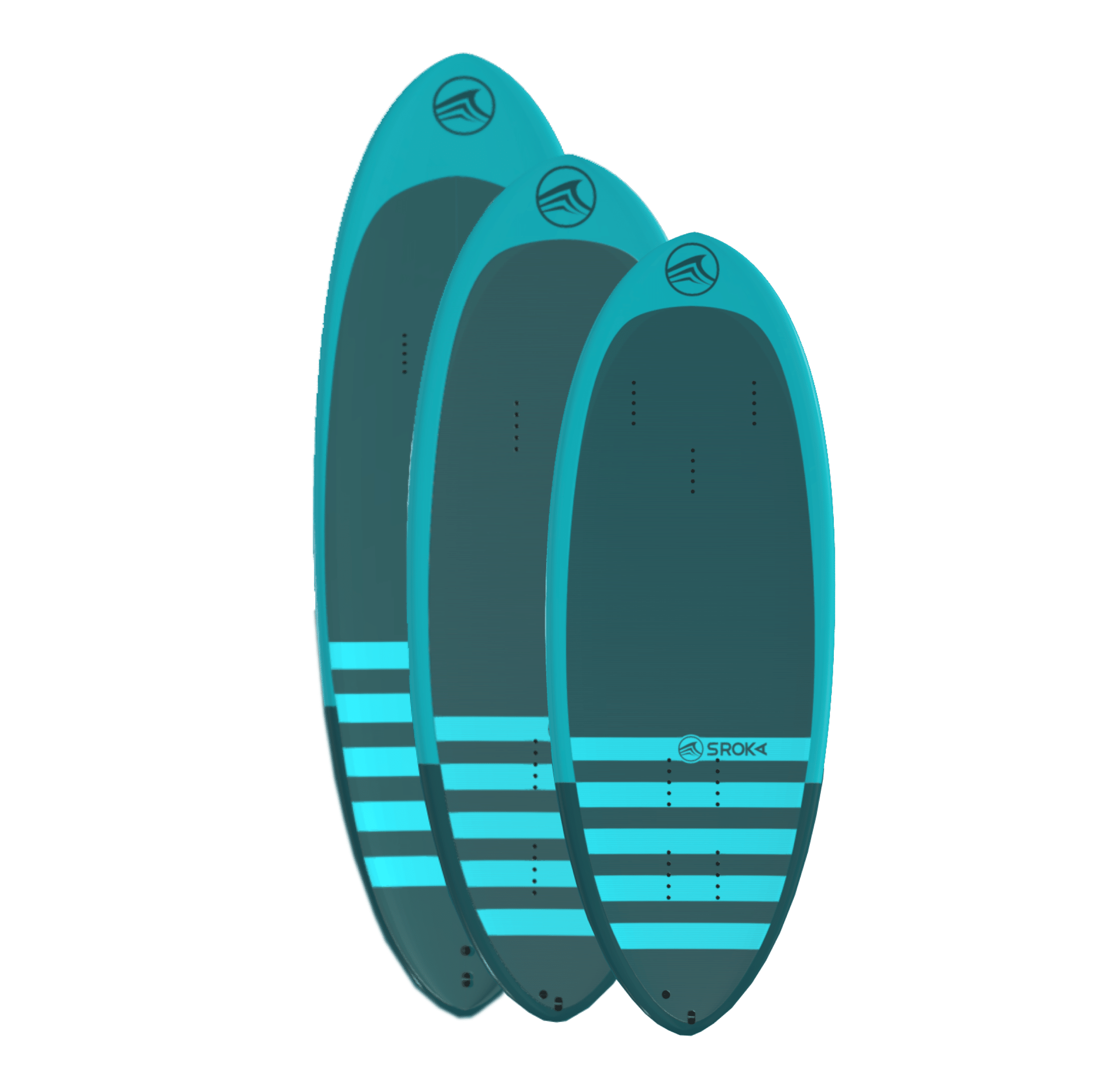
The Elite SW range
The new SW range from SROKA Company is the benchmark for high-performance foil surfboards, designed for all levels, from beginner to expert. Its full carbon sandwich construction (deck and hull) guarantees exceptional rigidity and strength, providing maximum responsiveness and responsiveness, essential for pumping and dynamic curves. Three sizes are available (4’4 – 32L, 5’0 – 40L, 5’6 – 50L), allowing each rider to find the board best suited to his or her size and ambitions, while ensuring easy handling and rapid progression.
The innovative shape, with its increased length and tightened tail, facilitates paddling, accelerates take-off and maximizes maneuverability without the risk of touchdowns during tight turns. The SW stands out for its versatility: it is 70% surf foil and 30% wing foil, ideal for those wishing to explore both disciplines with a single high-performance piece of equipment. Its sleek design, matte finish and elegant lines testify to the brand’s attention to detail and excellence.
Reinforced US rails ensure optimum rigidity and precise adjustment of the foil, while the integral pad offers superior comfort and grip. Developed and tested by Bruno Sroka and his team, the SW benefits from top-level expertise, guaranteeing quality, durability and fun on the water.
The SW range promises unforgettable sessions, easy progression and unbeatable value on the foil premium surf market.

SUP Foil and Downwind
We have developed the DW range to combine performance and versatility. Our DW 7’2 boards can be used for Wing Foil , Sup foil and Downwind. A long, narrow board will have more glide and will start very early on the slightest swell. The longer and thinner the board, the more it will glide, but it will lose a little in maneuverability. The DW 8’3 range will be more oriented towards Downwind on swell trains and Sup foil on very soft waves.
 Le Magazine
Le Magazine



